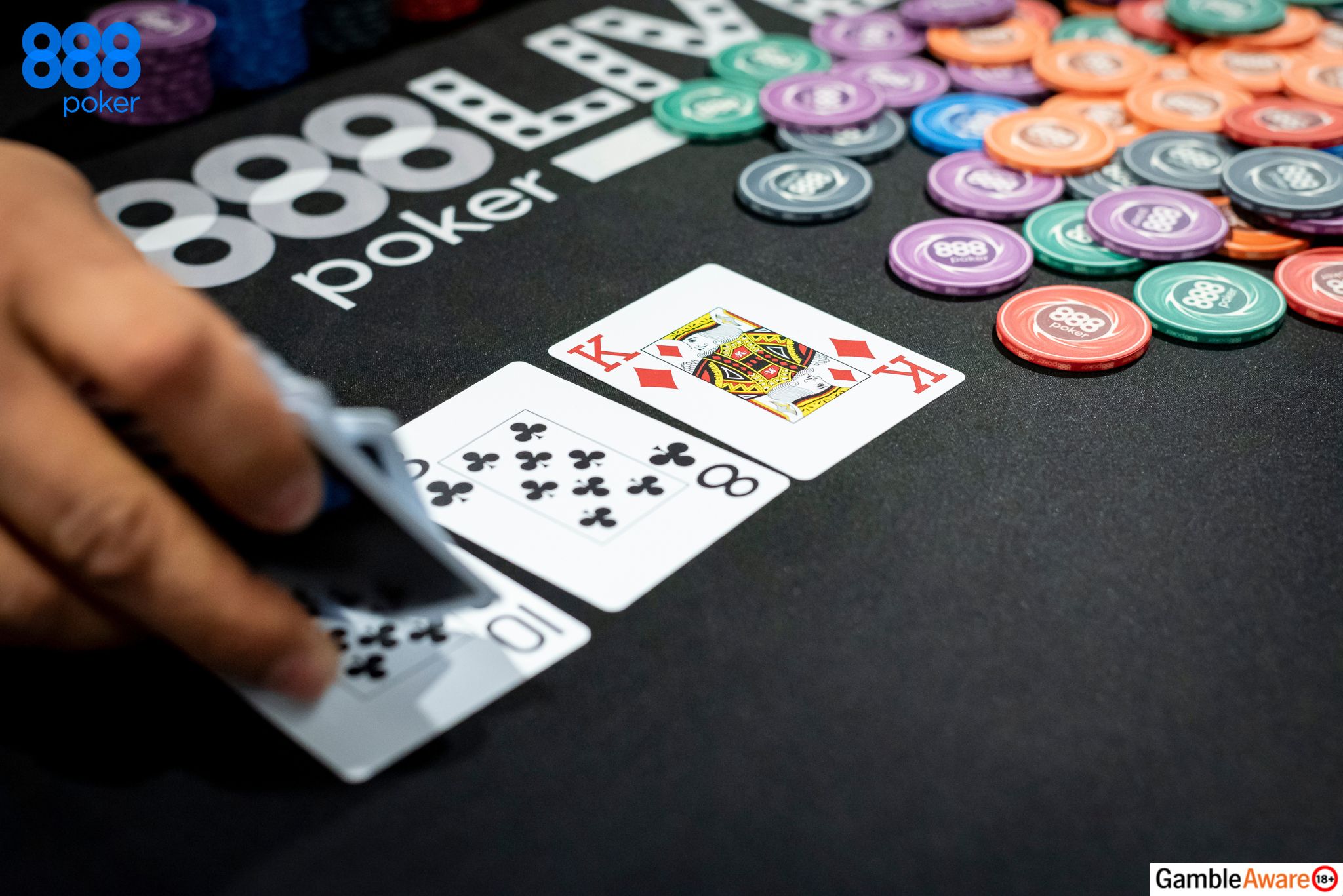Updated on April 30, 2025
Every poker player remembers their first all-in moment. Heart racing, palms sweating, as they push their entire stack into the middle. It's a make-or-break move that can instantly double your chips or send you packing.
In poker circles, this dramatic moment has earned its own poker term: the "shove."
Whether you're a poker tournaments grinder or a cash game specialist, mastering when and how to shove in poker can be the difference between walking away a winner and heading home broke.
Poker is full of different terms, many of which mean the same thing. "Shove" is one of those terms we'll focus on in this article.
What is a Shove in Poker?
Simply put, "shove" is just another way of saying "all-in", the move where you push all your chips or money into the pot. Yes, because apparently, all-in, jam, push, I've got somewhere to be, and YOLO weren't quite enough.
If you had to rank the most common ways poker players say "all-in," 'shove' would be near the top of the list.
Example of "shove" used in a sentence:
"Villain had definitely been betting the river too wide, so we decided to shove over the top."

Strategic Applications of Shoving
Shoving is a powerful move; when you do it, you'll win the pot most of the time. So, why not just shove every hand? As the saying goes, "It works every time until the last time."
In poker terms, that means that sooner or later, someone is going to call... and if you lose, you're out! The more often you shove, the less your opponents will believe you've got a strong poker hand.
Overdo it, and they'll start calling you with weaker hands more often.
Think of a poker shove as the biggest weapon in your arsenal. It can do serious damage, but you need to use it at the right moment. If you go in guns blazing too often, your opponents won't be scared or intimidated.
You can shove in no-limit types of poker games at any time for various reasons, whether to double up your stack or put your opponents to the test.
Short and Big Stack Poker Shove
Most players shove when they're short-stacked (10 big blinds or fewer). With so few chips, there's not much room for fancy plays. Their choices are usually limited to all-in or fold.
- For example, if you have 10,000 chips in a tournament with 500/1000/100 blinds and you're dealt A♦️Q♠️, shoving is often the best move.
For players with big stacks, things work the other way around. They can shove to apply pressure on smaller stacks—players who would be putting their tournament lives on the line.
Imagine there's 40,000 chips in the pot, and you're holding T♥️9♥️ on a T♦️J♣️2♥️5♦️ board. You've got 35,000 chips left, and your opponent, who has 150,000, moves all-in.
Their shove puts you in a tough spot, right?

Benefits of Strategic Poker Shove
Knowing when to shove is the best way to use your stack efficiently, especially if you can pick up blinds and antes without resistance. By shoving, you also avoid losing chips unnecessarily by limping in or raising just to fold later.
- For example, if you raise with A♥️T♣️ and the big blind calls, what's your plan when the flop comes 5♣️6♦️7♠️, and your opponent bets?
If you had shoved pre-flop instead, you likely would have won the blinds and antes straight away. But now, you're in danger of losing valuable chips if you try to execute a poker bluff in this spot.
Types of Shoves in Poker
Open Shove
An open shove means being the first player to enter the pot pre-flop by going all-in. You're opening the action with a shove.
Re-Shove
A re-shove is when you go all-in over another player's all-in. For example, if the blinds are 200/400/50, Ian Simpson shoves for 4,000 from the cutoff, and Lucia Navarro re-shoves to 12,000 from the button.
A re-shove is often a tool to isolate an opponent. It's like an iso-raise but all-in. In the example above, if Lucia just called, she'd be inviting other players to join the hand. But if she wants to play heads-up against Simpson, re-shoving discourages others from entering the pot.
Re-shoving usually indicates a strong hand since the player doing it assumes the first shove also came from a decent hand.
By shoving over the top, the re-shover tells everyone they've got an extremely strong holding, or at least one they're happy to battle with.
Back Shove
Let's say the UTG player (240,000 chips) raises to 25,000 with K♥️J♥️. You're in the hijack with 500,000 chips and look down at A♣️A♦️.
Instead of shoving immediately, you might just call, hoping a short-stacked player behind you will shove. You're calling with the intention of going all-in if the action reopens.
Now imagine the small blind does shove for 50,000, and the UTG player calls. This spot is perfect for a back shove - you go all-in over the top.
A back shove is tricky to pull off, but when it works, it often results in a huge pot. If you see another player at your table executing a back shove, be cautious because it usually signals a monster hand!
Poker Shove – FAQ
What's the difference between a shove and a regular all-in?
None. Shove is poker slang for all-in.
Is shoving only for desperate situations?
Not at all! While short-stacked players do it out of necessity, players with big stacks also do it to apply pressure on shorter stacks in strategic situations.

What's the biggest mistake beginners make when shoving?
Either shoving with a poker hand range that's too wide or waiting too long to get a premium hand like Aces to shove.
Can I shove in cash games or only tournaments?
While shoving is much more common in tournaments where stack sizes become shallow relative to blinds, it also happens in cash games, especially in big pots.
How do I know if my hand is strong enough to shove?
Consider three factors: your hand strength, position at the table, and stack size. Strong hands (big pairs, AK, AQ) can shove from any position. Weaker hands need a better position.
The shorter your stack, the wider range of hands you can shove with.
The Final Word on Shove in Poker
Shoving is all about timing and table image.
- Use it too often, and you become predictable.
- Use it too rarely, and you miss valuable opportunities to build your stack.
The best poker players of all time have an uncanny sense of when to pull the trigger on an all-in. They can read their opponents, calculating pot odds, and trusting their gut when the moment feels right.
So, next time you're sitting at the felt with a decision to make, remember sometimes the most powerful move is to shove and let the cards fall where they may.
Just make sure you've picked the right moment to fire your biggest bullet.
Originally published on October 10, 2018


